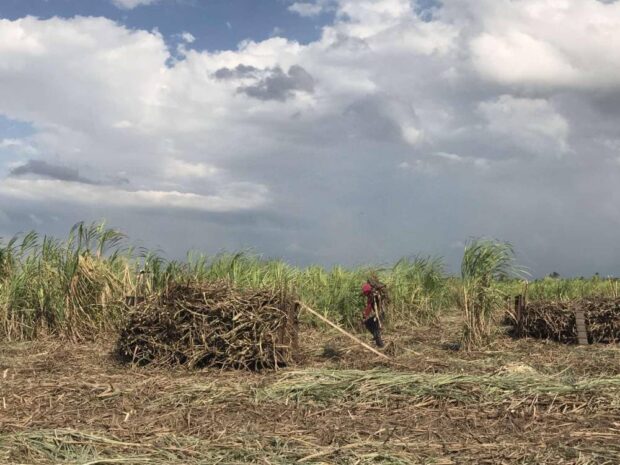
EARLY HARVEST | Sugar milling season in Negros Occidental, which is supposed to last until June, is projected to end as early as March due to the drought that has dried up cane fields and prompted planters to harvest early. (CONTRIBUTED PHOTO)
BACOLOD CITY, Negros Occidental, Philippines — The drought brought on by the El Niño weather phenomenon has caused a drop in sugar production and an early end to the milling season in some areas in Negros Occidental, the leading sugar producer in the country.
The Sugar Regulatory Administration (SRA) was still verifying the actual area affected while the drop in production was still being computed, but it would likely be substantial, said SRA Administrator Pablo Luis Azcona on Sunday.
This early, however, the losses could run into billions of pesos, according to Manuel Lamata, United Sugar Producers Federation of the Philippines president.
According to Azcona, “the dry spell has caused the cane to be harvested to mature early with a drop in tonnage, specifically crops planted from February to March 2023.”
“The dry spell also caused easier harvesting as the trucks, people and mechanical harvesters do not get bogged down. This, plus the drop in tonnage has caused a lot of farms to end milling earlier,” he added.
Azcona said a number of mills have been seeing a drop in cane deliveries by about 10,000 tons in the one-week range—a clear sign of dwindling cane supply.
READ: Drought gripping Negros Occidental, says Pagasa
“We already have mills indicating closure a few months earlier than usual as the cane supply dwindles,” he said.
Lamata said milling would usually start in September and would end in May and June. “But now, it looks like [milling will end] as early as March and April,” he said.
The dry spell since November 2023 has caused farms without irrigation to have problems planting as they could not get the cane to germinate.
“Most probably, they will plant when the rains come, hopefully at the end of May. The next problem is the availability of cane points plus a clearly delayed season. This will also affect the 2024-25 season,” Azcona said.
Pray for rain
Lamata affirmed that the prolonged drought has also greatly affected the sugar generated from canes.
“The sugarcane to be harvested has dried up therefore losing a lot of sugar supposedly to be manufactured. What is worse is the crop for next year’s harvest is already being affected,” he said, adding, “Only those who have irrigation facilities can survive this. Others would have to pray hard for the rains to come right away.”
Lamata said about 100,000 hectares of sugarcane fields in Negros Occidental alone have been affected by the extreme heat brought on by the El Niño phenomenon. “This will cause billions of pesos in losses,” he said.
Aurelio Gerardo Valderrama Jr., president of the Confederation of Sugar Producers’ Associations, said the drought has been felt badly on sugarcane fields in northern Negros Occidental.
“Definitely, milling is faster and a probable drop in production is expected, but overall we might reach the 1.8 metric tons [harvest] projection,” he said.
“From what we have been hearing, the south is bad, and that’s probably why most mills will be closing early,” he added.
Enrique Rojas, the National Federation of Sugarcane Planters president, called on the government to initiate cloud seeding operations in areas most affected by the drought.